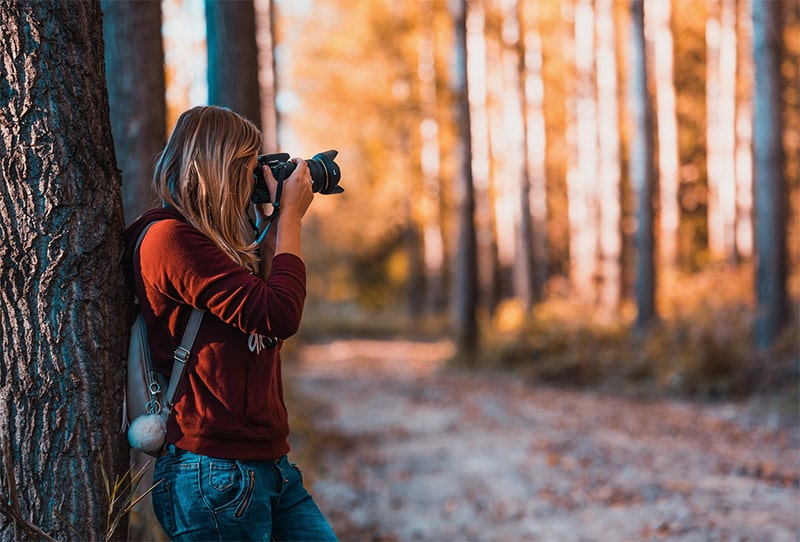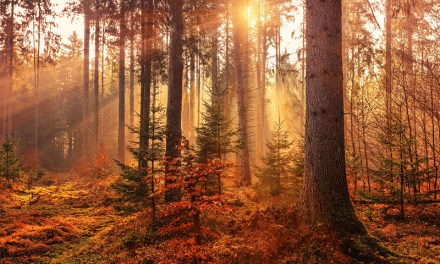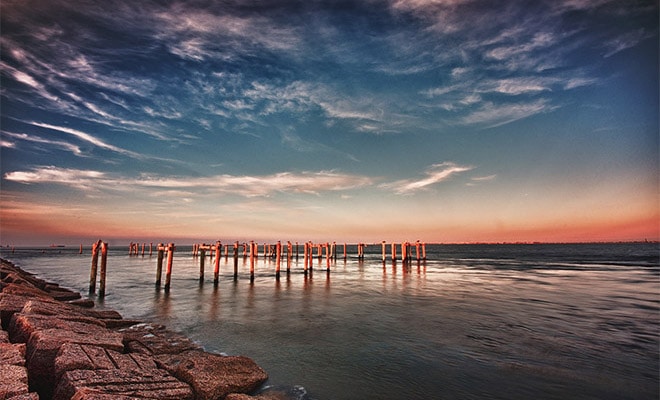Standing out as a landscape photographer can be a major challenge. There are so many great photographers out there, including many amateurs who have amazing portfolios. If you hope to move from the level of a hobbyist or enthusiast to a semi-professional or professional level, you’ll need to stand out in some way.
In this article, we’ll take a look at some specific things you can do to get more exposure and increase your profile within the industry.
1. Set Up a Portfolio Website
For starters, you’ll need to set up a portfolio website, if you don’t already have one. Setting up a website may sound intimidating or expensive, but it doesn’t have to be either of those things. Thankfully, there are a few platforms that make it fast, easy, and inexpensive to create and host your own website.
SmugMug – With SmugMug you can choose from several pre-designed templates that will give your website a clean and professional look. Just insert your images, set up the pages that you want, and enter your text. SmugMug also allows you to easily sell prints and downloadable digital files from your website.
Pricing for SmugMug starts at just $5.99 per month, which includes hosting and support. You’ll need to move up a few levels to the $23.99 per month plan in order to be able to sell photos through your site, but that’s still a great price.
Zenfolio – Zenfolio is similar to SmugMug in terms of features and pricing. With Zenfolio you can quickly and easily create a great-looking portfolio site to show off your photos. They also offer ecommerce functionality.
Pricing for Zenfolio starts at $7 per month, or $28 per month if you want to be able to sell your photos.
2. Start a Blog
Your portfolio website can also include a blog, where you can publish articles and share your latest photos. Using a blog is a great way to attract more traffic to your site and to communicate with your visitors.
3. Write for Other Photo Blogs
One of the best, and most realistic, ways to increase your exposure is to write for other photo blogs. There are thousands of photography blogs out there and many of them are looking for writers. Some of these opportunities will be paid, and others would require you to write the article for free. In either case, you’ll be able to include a brief author bio and (typically) a link to your own website.
If you’ve never written for another blog you may not know where to start, but it’s actually pretty easy. Some blogs have a “write for us” page with details about how to contact them or how to submit an article. Others may not provide information, but if you reach out to them, they may be open to it.
For finding paid opportunities, try job boards like ProBlogger and Blogging Pro, or proactively reach out to the larger photography blogs that hire freelance writers.
4. Write for Magazines
Aside from blogs, you can also write articles to be published in photo magazines. These opportunities can be harder to find than writing for other blogs, but the exposure can be great. Writing for a magazine can be great for your resume.
Most magazines have information about contributions somewhere on their website. For example, Outdoor Photographer provides plenty of info related to article submissions.
The magazines you target don’t need to be large national or international publications. Local magazines can also provide great opportunities and they may be very eager to get your article submission.
5. Get Featured on Websites that Showcase Photographers
There are a number of websites that regularly feature or showcase the work of various photographers. If you have something worthy, submit your photos to these sites and you could gain some major exposure.
You can find a list of 38 websites to submit your photos here.
6. Have a Presence on Social Networks
Social networks can provide an excellent platform that allows you to reach huge audiences. Of course, there are a lot of different social networks that you can use, but some are better for photographers than others. Instagram is, of course, the biggest and best social network that revolves around photography. Pinterest is also a highly-visual platform and great for getting exposure for your photography. Facebook can also be effective for reaching a lot of people and for sharing your photos.
7. Enter Photo Competitions
Photography competitions can also provide the perfect opportunity for you to get some exposure and recognition for your work. And if you’re able to win some competitions, it can go a long way towards helping you to establish yourself within the industry.
Some photo competitions are free to enter and others will have an entry fee. Of course, you’ll want to be careful about which competitions you enter to avoid spending too much money entering competitions, but in moderation, this can be a great way to start to build your profile. Photocrowd is a great place to find free photography competitions that you can enter.
8. Brand Yourself or Specialize
One of the best ways to stand out in a crowded industry like landscape photography is to specialize. There are several different ways to specialize and one of the best and most practical options is to focus specifically on your local landscapes. For example, instead of branding yourself as a landscape photographer, brand yourself as a “North Carolina landscape photographer.” With an effective approach, you’ll be the first photographer that people think of when they are looking for photos of your local area.
9. Write a Book or an Ebook
Writing and publishing a book can go a long way towards establishing your credibility on any topic. Thankfully, it’s easier than ever to write and self-publish a book or ebook. If you want to become known as an expert, you may want to consider writing a book or e-book.
While you could write a general book on landscape or nature photography, a better idea would be to narrow in on a particular topic. You could write on a specific aspect, like black & white nature photography, or write a guidebook that covers your local area, which goes along nicely with the previous point about specializing. As an example, UK photographer James Grant has written and self-published an in-depth guidebook Peak District Through the Lens that has helped to establish him as an authority.
10. Offer Tours or Workshops
Many landscape photographers make a portion of their income by leading workshops or photo tours and teaching others or at least guiding them to the right locations. This is another option that works well if you’ve chosen to brand yourself by specializing in a particular location. You probably know your local landscape very well, and you could help others to get better photos. By leading tours or workshops, you’ll be viewed as a go-to photographer for your area.
11. Partner with a Brand
Brand partnerships and sponsorships can also help to increase exposure. Some brand websites will list the photographers that they partner with, as the partnership can bring some valuable exposure to both parties.
12. Join NANPA
The North American Nature Photography Association is a non-profit organization that offers plenty of great networking opportunities, as well as possibilities to gain more exposure. The membership dues are very reasonable, starting at just $100 (or $25 for students) per year, and there are a lot of perks for members.
As a NANPA member, you’ll have the opportunity to submit articles to be published at their website, and you can also promote your own tours or workshops on their event calendar. Of course, there are plenty of other benefits like educational opportunities, networking opportunities, volunteer opportunities, and member discounts.
13. Join a Local Group
A national group like NANPA isn’t the only option. There may be local groups in your area that would provide excellent opportunities as well. Do a Google search for a camera club in your town or city and you’ll probably find a group that meets on a regular basis. Getting connected with other photographers in your local area can be a great way to start to build your profile.
As you can see, there are many different ways to go about growing your profile as a landscape photographer. The approach you choose is up to you, but the important thing is to take action and start making progress, regardless of which approach you choose.
Photo license link: Pexels license













